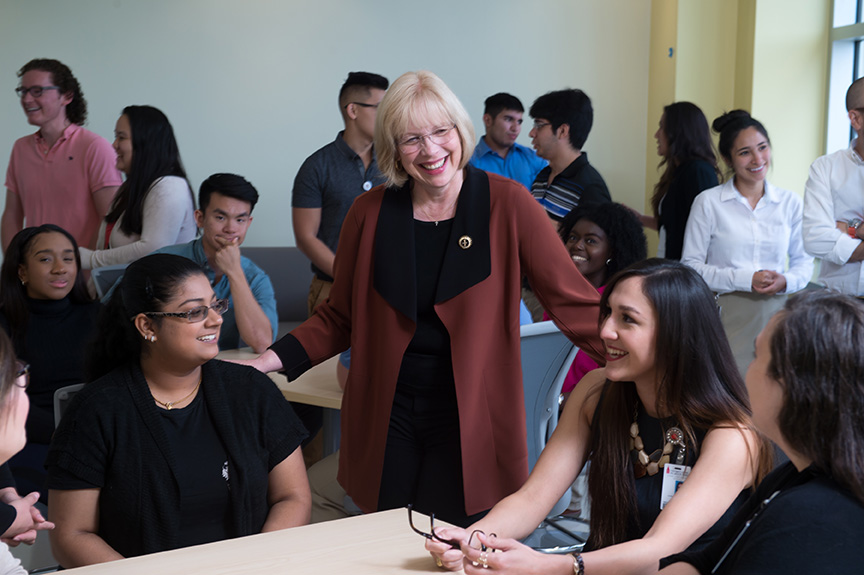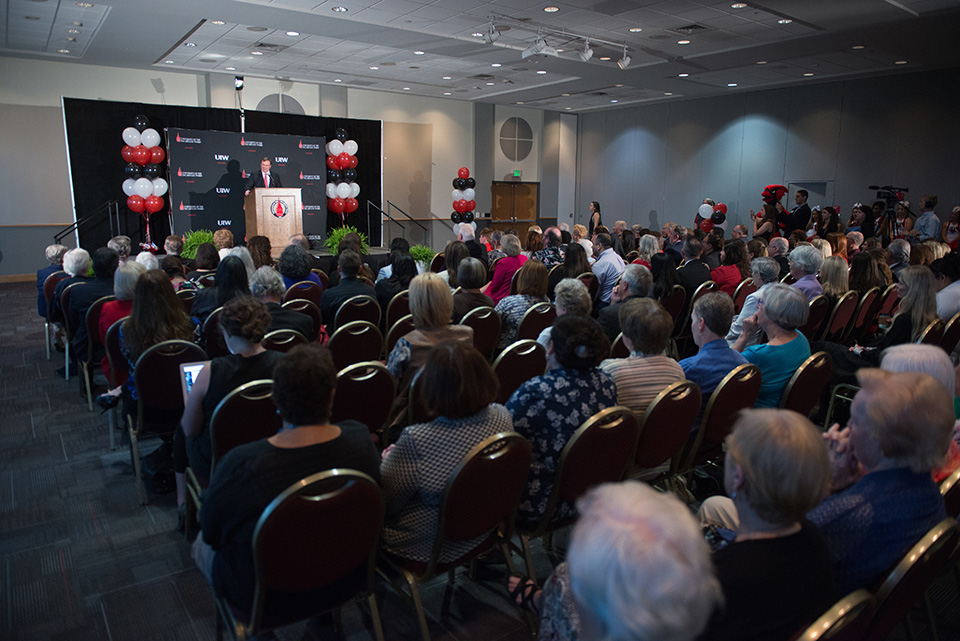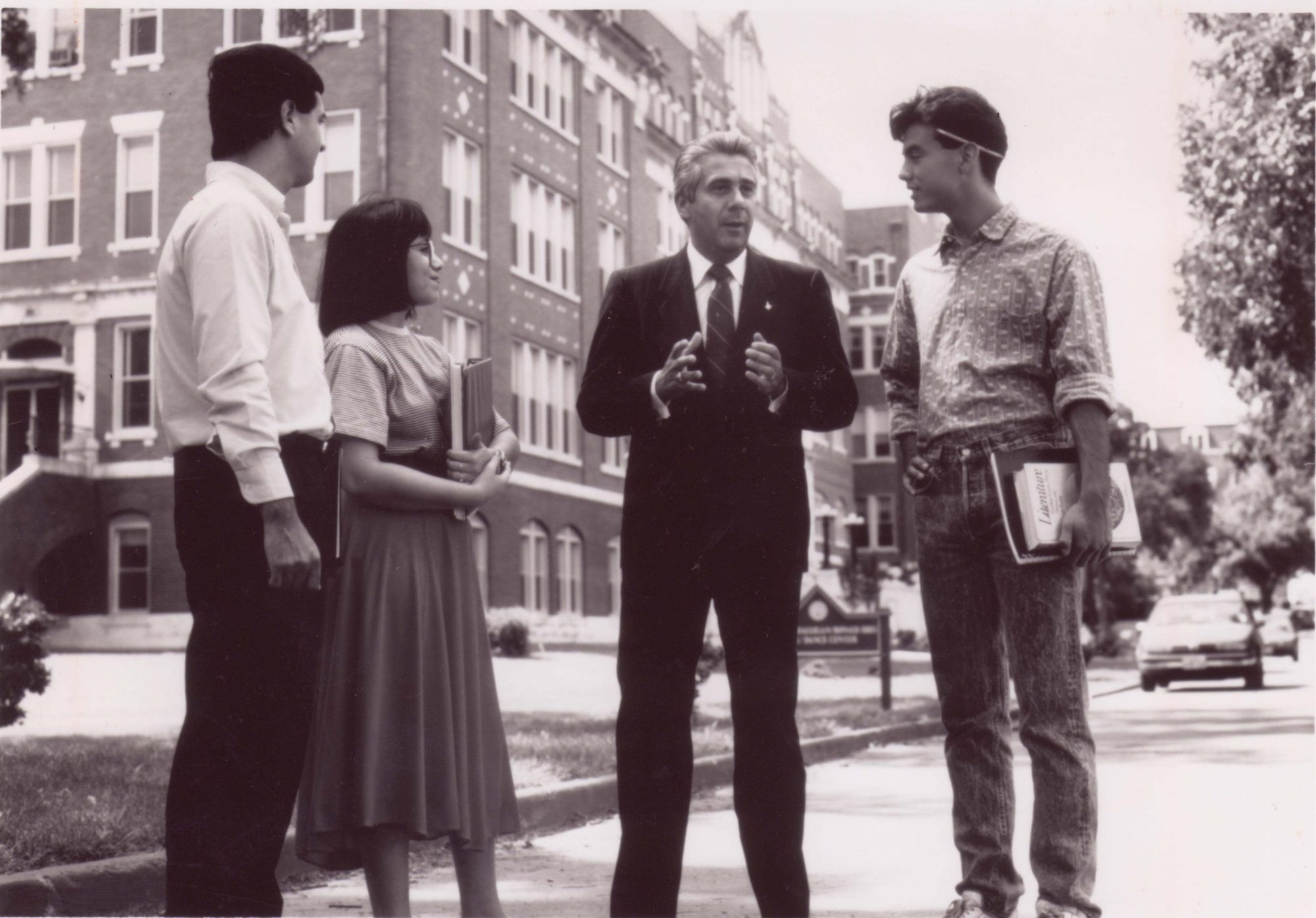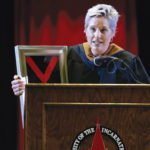By Edmund Tijerina
With groups of medical students walking through an expansive campus just off one of South San Antonio’s main thoroughfares, the UIW School of Osteopathic Medicine (UIWSOM) looks like a long-standing institution, not a school in its first full year.
But it was only five years ago that the school was a mere idea to address the shortage of primary care physicians in South Texas. As the school year starts, the medical school has students going through their first unit of coursework, a second cohort of students in the Master of Biomedical Science program, and a new round of interviews for the incoming class in the Doctor of Osteopathic Medicine program.
“It’s busy, but it’s going very well,” said Dr. Robyn Phillips-Madson, the medical school’s founding dean. “The faculty and learners are working very hard.”
Long road to opening
The process of developing more physicians began in 2012, when then-UIW president Dr. Louis Agnese Jr. introduced the idea of creating a medical school. From there, Provost Dr. Kathi Light and then-Chancellor Dr. Denise Doyle began the preliminary work of establishing a medical school. In part because of South Texas’ urgent need for primary care physicians, and in accordance with the Mission, the administrators decided that UIW’s school would focus on osteopathic medicine, which generally takes a more holistic approach to health, and largely sends more physicians into primary care medicine.
After exploring multiple locations for the endeavor, the University decided on Brooks in the heart of San Antonio’s South Side. It proved to be an ideal site.
“We want to make a difference in the community, but the community needs to drive that, not us,” Madson said. “We don’t come into a community and say, ‘This is what we need.’ We say, ‘What do you need? What do you need in your future physician workforce?’ ”
As part of the community conversation with local physicians, San Antonio leaders and South Side residents, Madson and her team gathered information to guide the building of a mission and curriculum. Once they created a curriculum, administrators hired faculty and staff to teach it. Then they had to decide what kinds of students they would seek to meet that mission, and the best way to identify and measure those qualities.
From there, the attention shifted to finding sites where students could perform their clinical rotations and develop a strategic plan for research that the school will undertake.
At the same time, the school needed to develop support services for the students, to address the nationwide high rates of depression and suicide among medical students and physicians.
Addressing the need

Dr. Phillips_Madson and students from the Master of Biomedical Sciences program
The medical school allows UIW to further its goal of helping the community of South Texas — and beyond — address the critical need for more primary care physicians.
About half of Texas counties have a shortage of primary care physicians, and the Association of American Medical Colleges projected last year that the United States would face a shortage of up to 35,600 primary care physicians by 2025. So the addition of some 150 new physicians each year comes at a critical time.
“Primary care really is the answer to health care problems in the United States and around the world,” she said. “If you have a robust primary care system, where those primary care physicians are practicing to the full scope of their knowledge and ability, and training, that reduces costs, that’s more effective, and it’s more efficient.”
Meanwhile, don’t look for an academic bubble of separation between the medical school and the city that surrounds it. In keeping with the UIW Mission and the approach of osteopathic medicine, expect to see connections and partnerships.
“Our whole goal is to not do for others what they can do for themselves,” said Madson. “It’s to come alongside and empower, encourage and learn from them as much as people learn from what’s going on here. We’re not here to be some kind of ivory tower; we’re here to be part of the community.”










